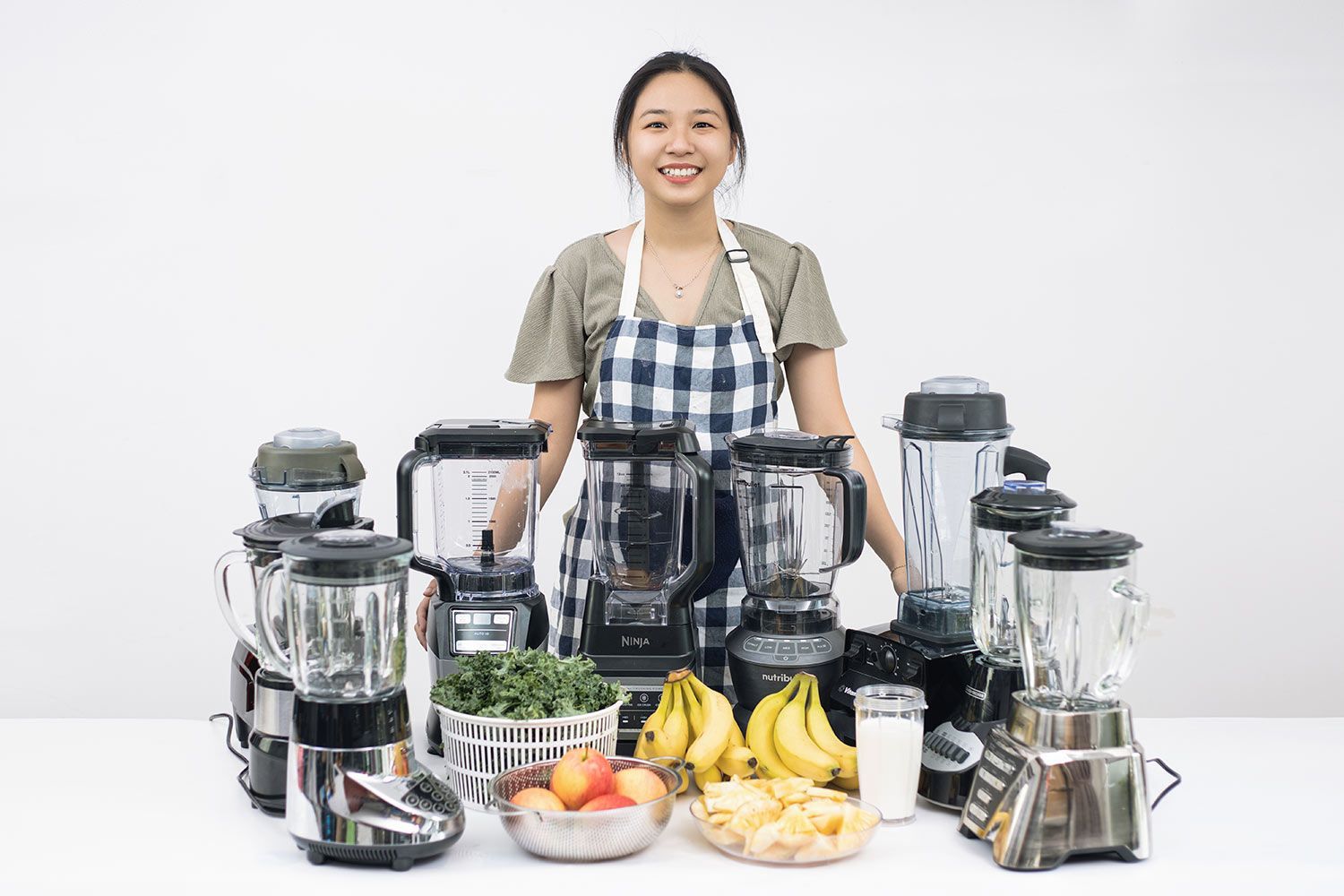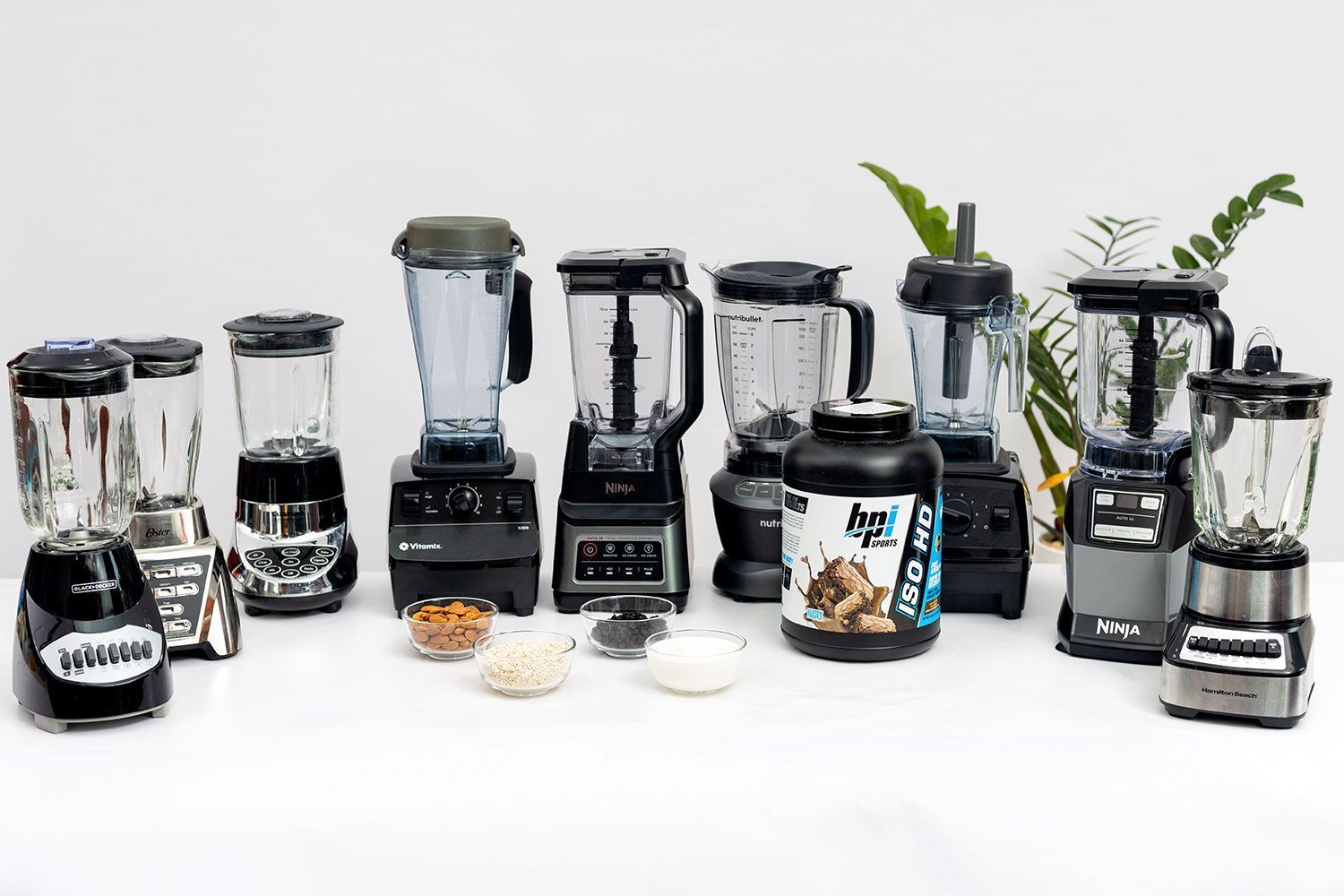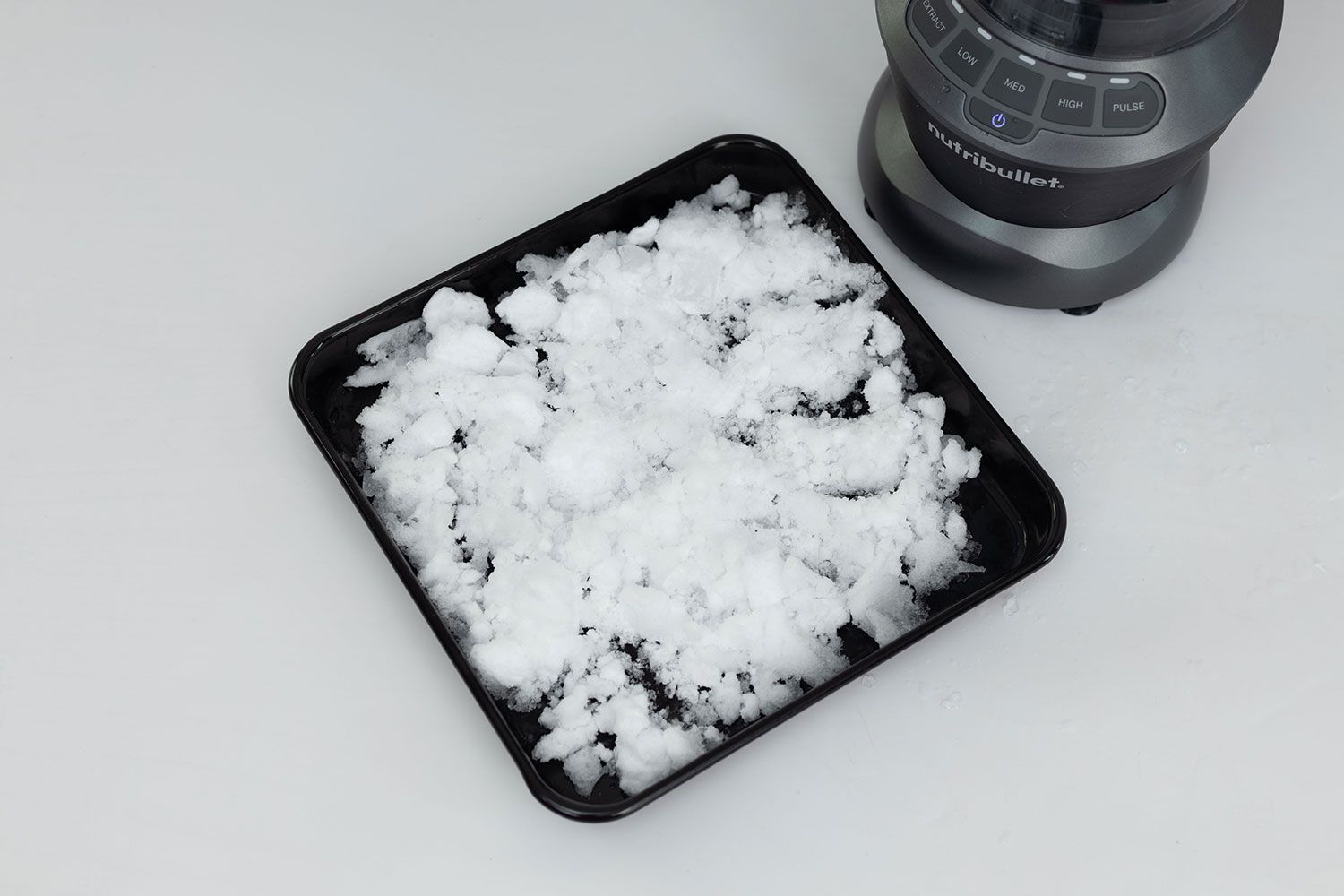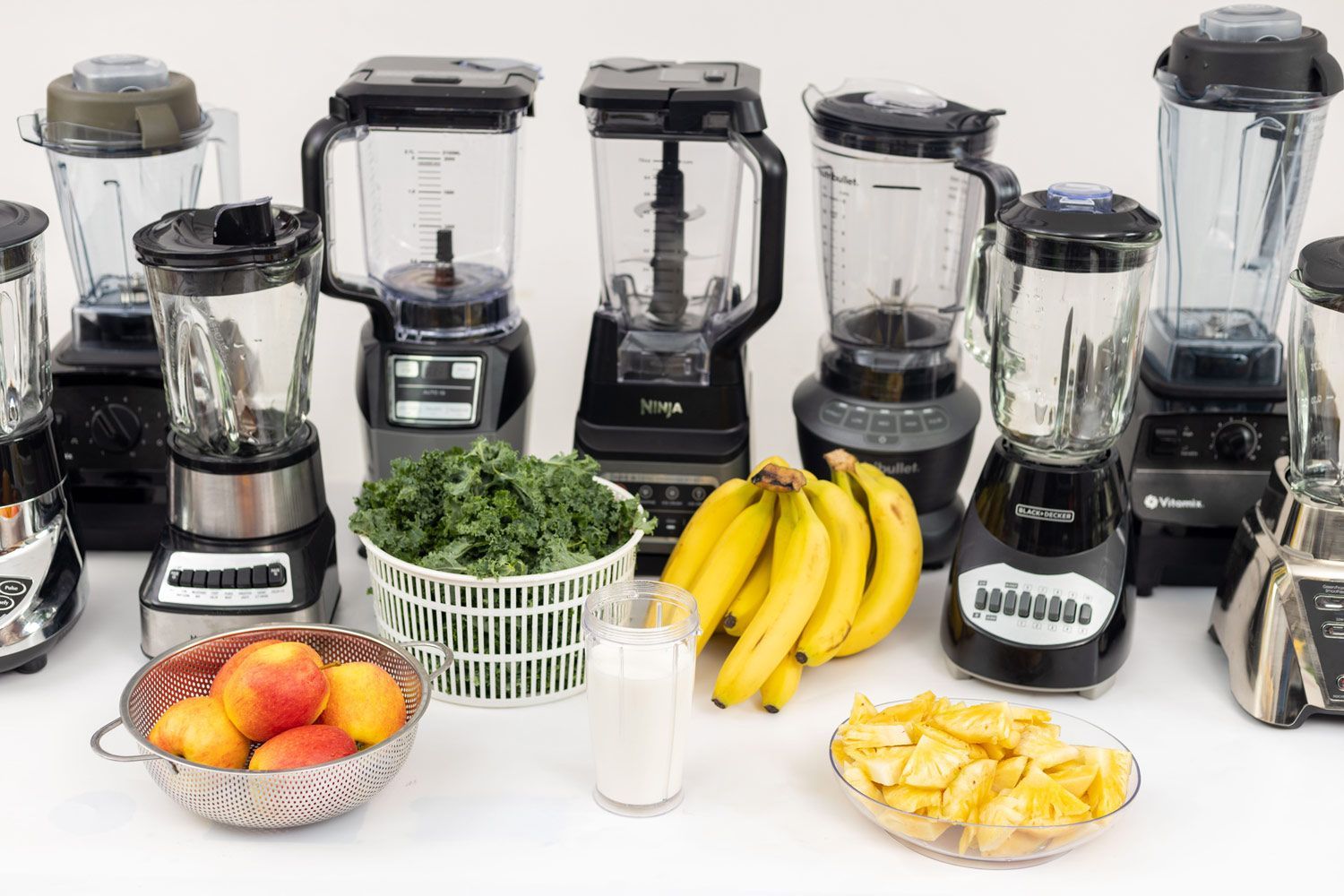Our recommendations are made independently. We may receive commissions from purchases made via our links.
How Shouldit Tests Full-Sized Blenders v1.0
Every year, we put dozens of full-sized blenders through extensive tests that are designed to reveal their practicality in real kitchens. We then analyze the testing results and come to a final verdict on which blenders deserve recognition for their outstanding features and capabilities.
Our review of the best full-sized blenders recognizes the top models on the market. But what sets these blenders apart and how did they earn their rankings? It all starts with our rigorous in-house testing process.
Every year, we put dozens of full-sized blenders through extensive tests that are designed to reveal their practicality in real kitchens. We then analyze the testing results and come to a final verdict on which blenders deserve recognition for their outstanding features and capabilities.
This article is here to provide insight into our testing methodology and clarify our reviews.

Overall Ratings
Each blender’s overall score is a weighted average based on three component scores. They’re weighted according to overall importance, with Performance making up 60% of the total and Design and Usability each being worth 20%. These component scores are themselves composed of various subcategories, each with a different weight as well.
Performance (60%)
Our testing recipes are carefully selected to reflect the tasks that users most often perform with their full-sized blenders. That way, we can get a more practical evaluation of the blender's performance in real-world kitchens. By testing each function in isolation, we can also assess the blender's capability in a precise and systematic manner. Our testing recipes include Smoothies, Frozen Fruit Smoothies, Protein Shakes, Almond Butter, and Crushed Ice.
Note that our testing environment is carefully controlled, including the use of the roughly same quality ingredients, testing equipment, and measurement techniques for each blender. Additionally, each blender sees the same standardized testing procedures for each test type. Together, these approaches help ensure the final testing results are consistent and comparable.
In order to provide a clearer and more objective evaluation, we have developed a ranking system that assigns scores to each blender based on its performance in each of the five tests. They are rated on a scale of 1 to 10. The blender’s overall performance score is calculated as the average of these scores, but since each test type tends to differ in terms of importance to users, we weight them differently. The five tests together constitute 60% of the overall rating.
- Smoothie (35% of the overall performance score): The test involves blending a mixture of kale, apple, pineapple, banana, and milk to better understand each blender’s ability to process tough, fibrous ingredients. This test is crucial because smoothies made with fresh fruits and green veggies are staples in many households. As such, it is weighted at 35%, the highest of all the performance subcategories.
- Frozen Fruit Smoothie (20%): Our testing smoothie is a combination of mango, strawberry, pineapple, and plain milk. These ingredients pose a considerable challenge to blenders due to their hardness (especially when frozen) and varying textures. With this test, we can easily assess the blenders’ ability to make icy treats. We can also identify the competitive advantages, strengths, and weaknesses of each. We allocated this test 20% of the total performance score.
- Almond Butter (20%): Almonds are notoriously hard to grind down, but they’re also the basis for a popular spread. Therefore, testing a blender's ability to handle almonds and produce smooth, spreadable butter will give us a sense of its practical value for making nut butters and other spreads. The blender’s durability and reliability under continuous use are also revealed—making nut butter can take a considerable amount of time and place strain on the motor. The test is granted 15% of the overall performance score.
- Protein Shake (15%): For those fitness buffs who are seeking a blender specifically to meet their pre- or post-workout shake needs, this test is the ultimate way to narrow the field. Our comprehensive testing process examines each blender's ability to process almonds, dried berries, oatmeal, protein powder, and milk. We weight this test at 15% of the total.
- Crushed Ice (10%): Full-size countertop blenders typically outperform personal or immersion blenders in ice-crushing ability, but not all of them are created equal. This test highlights machines that excel at crushing ice, so it’s particularly useful if you plan to make cocktails or snow cones. The ice test can also reveal durability issues that may arise under heavy-duty use, making it an important consideration if you need a high-performing blender. We assign this test 10% of the overall performance score.
We record each testing process on video so we can go back and compare the footage with our notes to ensure that our evaluations are as reliable and objective as possible. In addition to the drink’s smoothness, we also prioritize timing as a key factor in each blender's performance. Hence, we use a stopwatch to accurately record how long each test lasts. It can help us eliminate bias or inconsistencies that may arise from differences in perception or human error.
Design (20%)
The design score is another crucial component of our overall rating, accounting for 20% of the total. This score is based on three key factors: Blades, Build Quality, and Control Panel.
- In the blades section, which makes up 25% of the design score, we assess the design, strength, and sharpness of the blender's blades. We pay particular attention to blenders with robust and heavy-duty blades, and assign them higher scores to reflect their superior performance in this category.
- Build quality is the most significant factor in the design score, accounting for 60%. We evaluate the blender's aesthetic appearance, sturdiness, and the quality of its construction materials. A high-quality blender will have a sleek and appealing appearance while also being constructed with durable materials that can withstand heavy use for many years.
- The control panel of a blender plays crucial to the blender’s functionality, so we think its design is worth 15% of the total score. To ensure the panel's user-friendliness, we evaluate the layout, labeling, and instructions in the manual. We also test any pre-set programs (if available) to determine their value and ability to produce desired results.
Usability (20%)
The usability rating, which accounts for 20% of the overall score, reflects the real-world experience of using each blender. We believe that a blender that’s not user-friendly is probably not worth buying, even if it has exceptional performance capabilities. To evaluate usability, we consider multiple factors, including the blender's Ease of Blend, Noise Level, Assembly, and Cleanability. While all of these factors are important, we give greater weight to some than to others.
Ease of Blend (40%)
We place a significant emphasis on the user-friendliness of each blender, assigning this section 40% of the overall usability score. We carefully assess various factors to determine the ease of blend:
- Hands-free blending: A blender must be able to draw ingredients towards its blades efficiently, without requiring excessive manual intervention. The ability to prevent ingredients from getting stuck or jammed is also crucial, as it minimizes the times when you need to pause the blending process. If a blender can perform hands-free blending, it gives you more freedom to multitask in the kitchen.
- Stable and mess-free operation: We expect minimal spilling, splatter, and wobble problems during use. Good performance in this regard will translate to a higher ease-of-blend score.
- Accessories’ usefulness: Some blenders come with extra accessories like the tamper, dry blade assembly, and to-go cups. We evaluate the quality of these add-ons and conclude whether they add to the blender's overall usability.
- Cord length: It can sound minor, but a cord that is too short will limit the blender's mobility, while a cord that is excessively long may become tangled or pose a tripping hazard. However, the importance of the power cord length may vary depending on your kitchen’s layout and power outlet locations. No single length is perfect for everyone, so we gathered feedback from many users with very different kitchens to settle on a good average length. We also consider industry standards and safety guidelines related to power cord length to increase our evaluation’s accuracy.
Noise Level (20%)
We take into account the impact of noise on the overall user experience and allocate 20% of the usability score to it.
A blender that generates excessive noise can be a considerable annoyance and detract from the user's experience. Loud noise can cause fatigue or discomfort and disturb others in the vicinity. It can also create a stressful environment, affecting mood and overall well-being. A blender with a quieter motor will be more enjoyable to use, so your kitchen will be a more calm and relaxing place.
Furthermore, excessive noise levels make it challenging for users to hear the blender's motor and determine when a blend is complete, leading to potential over-blending or under-blending.
To evaluate the noise levels of a blender, we employ specialized equipment to measure its decibel output during different stages of the blending process. We also conduct subjective evaluations to gauge how loud the blender sounds to an average user.
Additionally, we evaluate the type of noise produced by the blender, as some frequencies may be more tolerable than others. For example, a blender that produces a low-pitched humming noise may not be as obnoxious as one that emits a high-pitched screeching sound, even if they have the same decibel output. By combining objective and subjective measures, we can create a score breakdown that accurately reflects the impact of the blender's noise levels on usability.
Assembly (15%)
This metric accounts for 15% of the overall usability score. A streamlined assembly process is a key to hassle-free set-up and quick blending. To score this section, we carefully examine the instructions and evaluate how much effort it takes to put the blender together. At the same time, we pay close attention to the connections between its various parts, verifying that they are secure and reliable enough to prevent accidents or damage.
Cleanability (25%)
We assign 25% of the usability rating to the cleaning factor. Here, we aim to give you insight into how easy it is to manually remove residual food and liquid from the blades, pitcher, and other components. This information will help you anticipate the amount of time and effort you’ll spend cleaning after you’ve finished blending.




